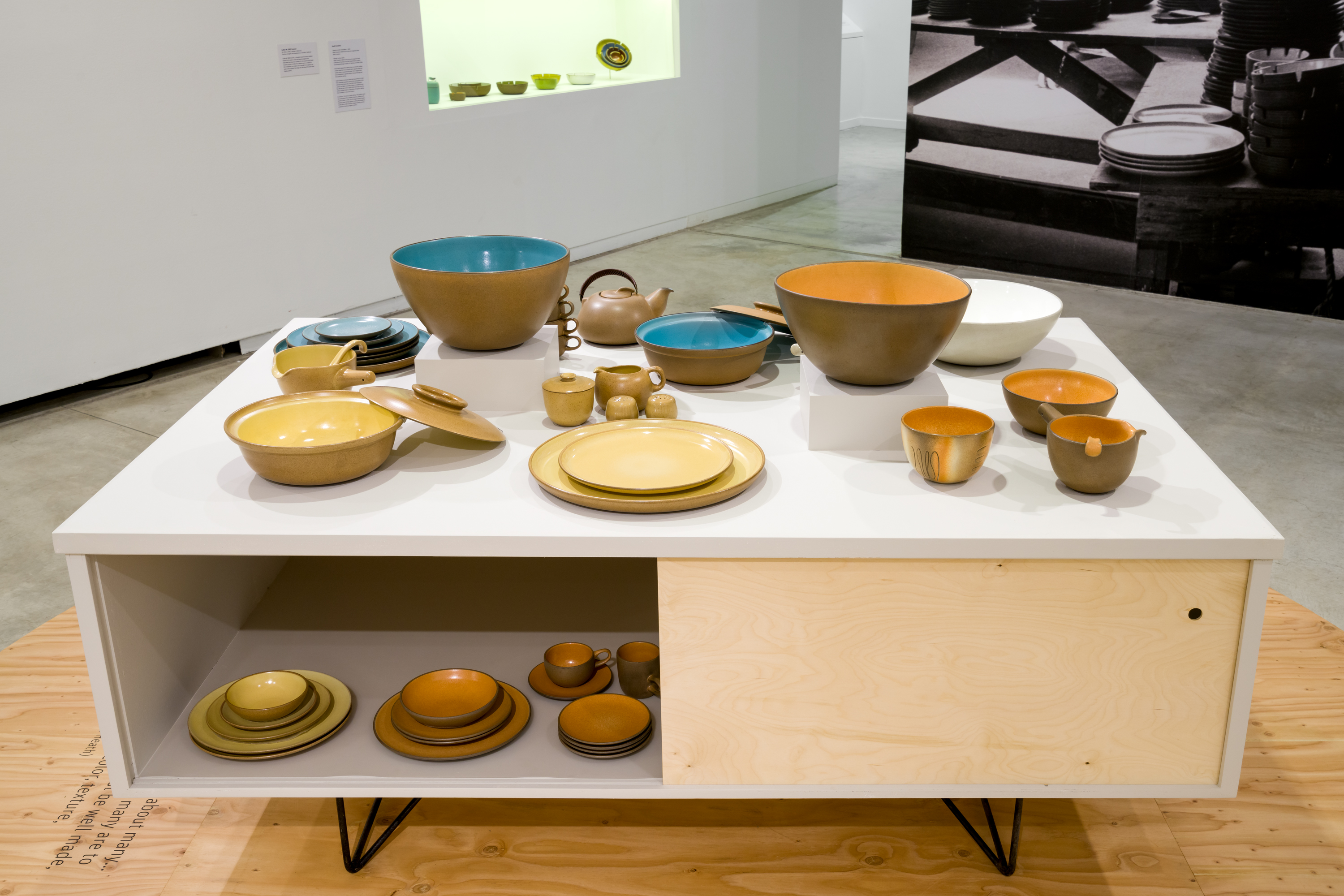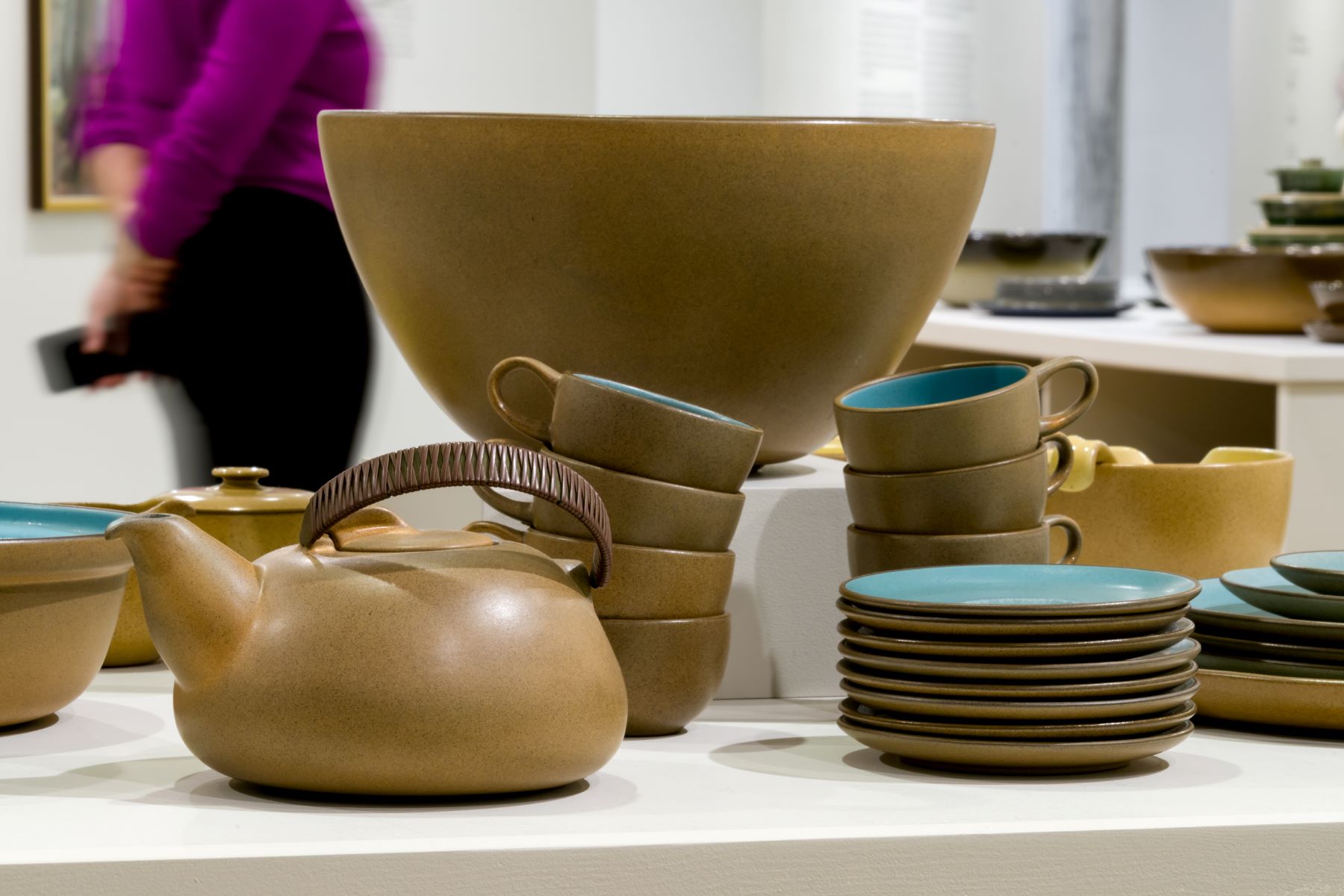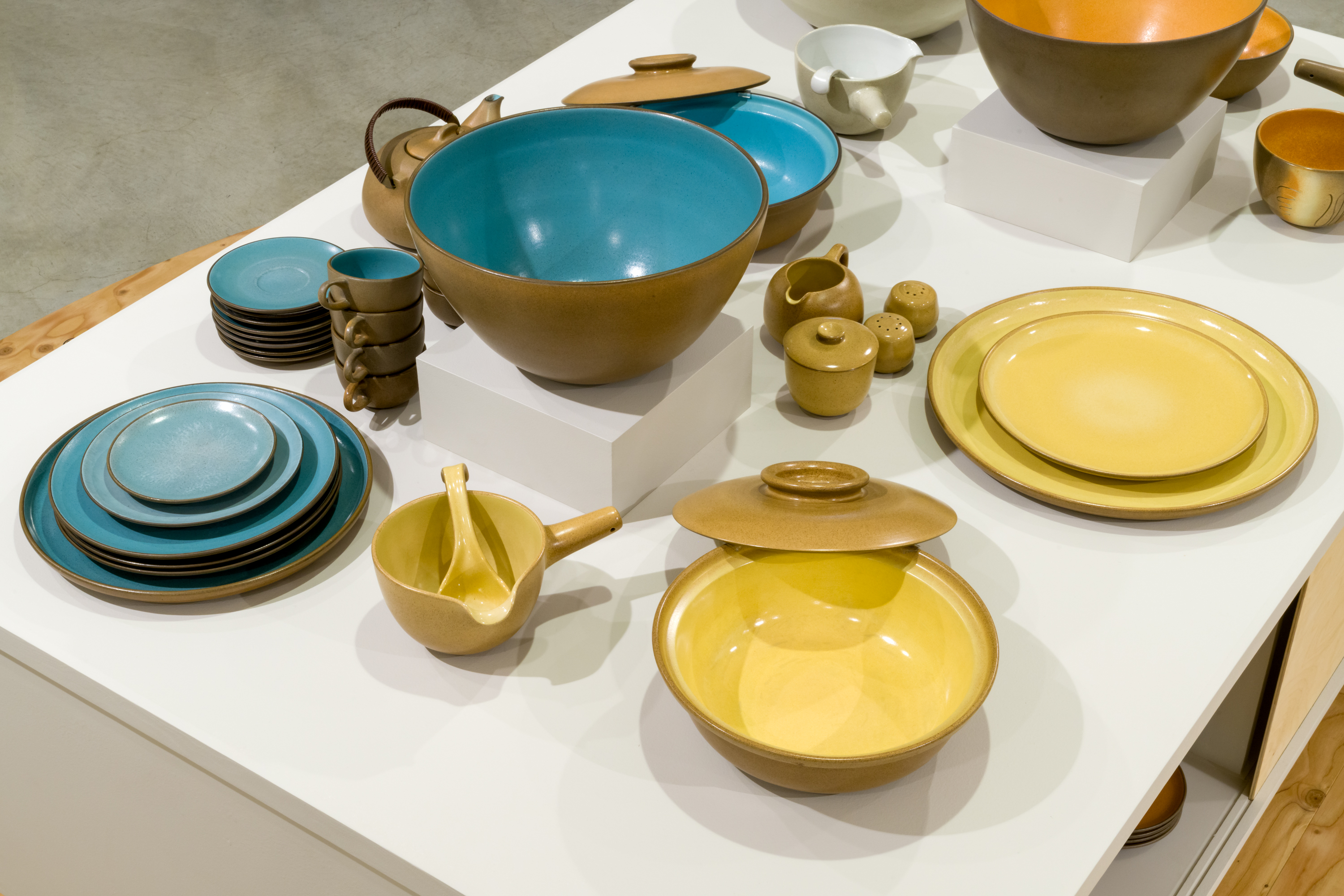Though Heath began experimenting with porcelain-lined ware as early as 1949, she did not use the technique in production until the two-toned glazes—White/Sand, Gold/Apricot, Pumpkin/Brown—were released with the buffet service in 1955. She continued her fascination with the interaction between clay and glaze. A porcelain slip applied to the interior of the ware blocked the effect of the manganese in the clay body, creating two distinct colours from the same glaze.
The Turquoise/Brown combination was the first to use an exposed clay edge; this became a defining feature of Heathware. Turquoise/Brown accompanied the existing two-toned patterns released a few years prior and was advertised alongside pieces from the buffet service. Not only did the colourful palette lend itself to entertaining, so too did the expanded offering of oversized and versatile serving pieces, such a large 15 ½–inch platter, a huge party bowl and a pouring bowl with ladle for gravies and batters.
Designing for industry means thinking about many… many-of-a-kind for many people. If the many are to be enjoyed for a long time, they must be well made, with the best possible shape, color, texture, and a certain aura. (Edith Heath, typed note, c. 1980)



